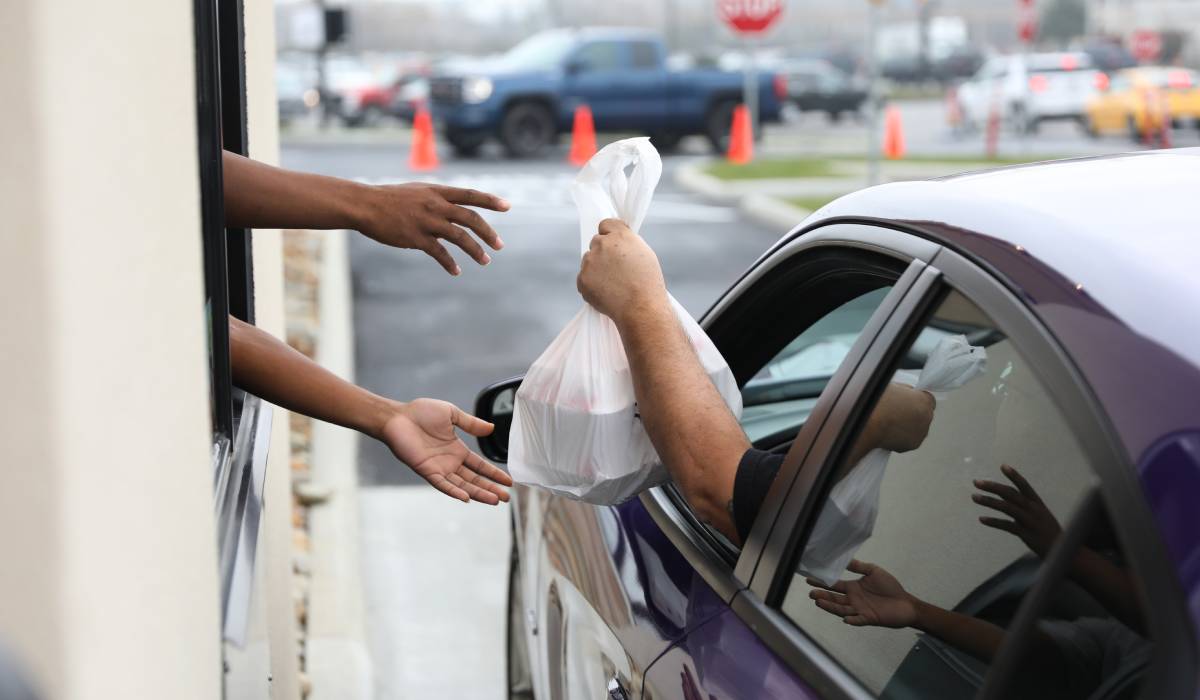Quick-service restaurants are experiencing a surge in post-COVID innovation as customer buying behaviors are changed forever. Today’s customers don’t just want highly consistent food quality, they want a better experience with a side order of increased personalization, touchless ordering, and smart drive-thrus—with pickup times measured in seconds.
The good news is that new AI-driven smart applications are appearing that can help deliver on these needs. The bad news is that all these new capabilities mean more IT systems have to be installed and managed at each location. This leads to high infrastructure costs, more pressure on valuable floor-space, and increased reliance on expensive IT skills to keep things running.
What if you could accelerate in-restaurant application delivery across all your locations, while minimizing infrastructure costs, and reducing complexity?
Join us as we take a look at how taking a smart approach to next-gen technology can help quick-service restaurants to get both fast and personal.
The rise of the smart application
Since the onset of the COVID pandemic the quick service restaurant industry has seen the rapid adoption of multi-channel ordering and a huge shift away from in-location dining to drive-thru and curbside pickup, as consumers have sought to reduce physical touchpoints in favor of digital interactions. Additionally, on-going staff shortages and higher employee churn have put increased pressure on speed, throughput and accuracy. Faced with changing consumer demand and a labor gap, switched-on quick-serves are increasingly looking to technology to serve up the answers.
And, it’s the smart applications that are delivering.
Multichannel and touchless ordering and video analytics are massively speeding up ordering and fulfillment processes both inside the restaurant and at the drive-thru and curbside pickup points which have fast become the preferred choice of interaction for COVID-weary consumers. In fact 65 percent of customers in a recent Tilster study said they would visit a restaurant more often if self-service kiosks were offered, and 30 percent of customers prefer to order from a kiosk versus a cashier if the lines were of equal length.
AI-based applications afford the opportunity for a more efficient and personalized front-of-house experience. Think number plate recognition systems which can identify drive-thru customers instantly and offer them their favorite choices. And voice recognition and synthesis systems that can take orders more accurately than a human being, and never forget to upsell. And the robots are finally here—flipping burgers and cooking fries—all while increasing line throughput by up to 30 percent.
Furthermore, integrated kitchen display systems can reduce ticket times by 40 percent, and ensure multichannel consistency while inventory control systems can automatically adjust menus based on stock levels, and queue monitoring systems can make sure the fastest items to cook are presented first at the busiest times.
In short, smart applications are not only improving kitchen efficiency, streamlining operations and optimizing the customer experience, they are also allowing the restaurant industry to own its data, and grow smarter.
And, as McKinsey’s recent report on reimagining restaurants for the next normal identifies, effective use of this data will be key to reimagining quick-serves, post pandemic, allowing restaurants to improve the dining-in experience for consumers by targeting them with personalized digital offers or promotions, or engaging them via feedback requests or with rewards programs, for example.
Restaurant infrastructure and its associated costs are exploding to keep up with this data-driven demand.
The fact is that pure centralized cloud models don’t work for connected quick-service restaurant environments. As a restaurant becomes more dependent upon an increasing number of data-hungry digital services, intermittent wide-area connectivity, latency and data bottlenecks result in anything from poor customer experience all the way through to complete shut down in operations—and corresponding lost revenue.
These smart applications and services need to run where the data happens—in the restaurant, or at the “Edge.” To maximize insight from data and to fully share data between applications, data must be captured, shared and acted upon locally. Take kitchen robotics or voice ordering systems for example, instant responses to circumstances are required and this can preclude cloud round-trip times. After all, a delay of even a couple of hundred milliseconds in voice response makes speech feel extremely unnatural.
As a result, restaurants are filling up with technology “sprawl”—dedicated pieces of hardware to run each application. All this new hardware is not only expensive, but requires specific management skills for each ‘stack’, and often lacks the ability to centrally and remotely manage across hundreds or thousands of locations. And, due to the re-balancing of restaurant interiors, the physical space for these systems is in increasingly short supply.
Infrastructural solutions make managing in-restaurant applications as easy as the cloud. By turning each restaurant location into a “micro cloud,” all restaurant services, legacy and bleeding edge, can be run on a small footprint via a single, highly efficient, ruggedized stack of hardware. These micro-clouds can then be managed remotely as one distributed cloud from a central management dashboard allowing applications to be deployed and managed across all sites, in just a few clicks.
This consolidated approach has helped one U.S. restaurant chain to add the applications necessary to improve customer experience in each of its 430-plus locations, as well as continuing to run existing applications with high availability—all while meeting its infrastructure budget requirement of $7,500 per restaurant per year.
Now that’s what we call taking a smart approach to next-gen technology.
Kosten Metreweli is the Chief Marketing Officer of Sunlight and is responsible for the commercial functions at Sunlight. He has over 20 years of management team experience in marketing, sales and product functions at high growth deep tech companies leading to an IPO and three trade sales so far. Kosten has led market entry programmes in the U.S., European, and APAC markets. Before, Kosten was a management consultant, helping blue chip companies with their technology strategies.








